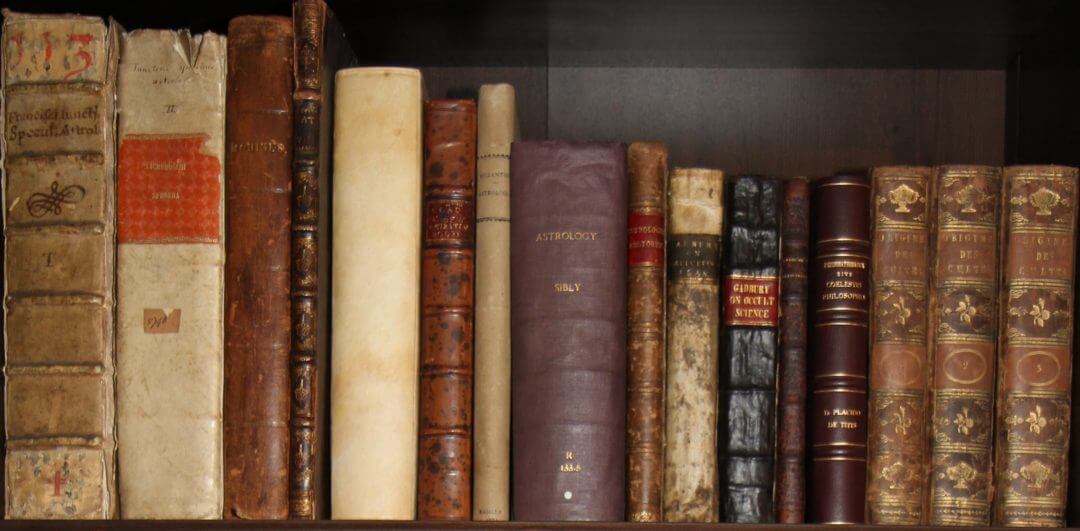Leo, Alan[1] ‘(“Astrology for All” Series. – Vol. IV.) The Progressed Horoscope[.] A Sequel to The Art of Synthesis Wherein the Progression of the Horoscope Is Exhaustively Considered, Both in Principle and in Practice[;] including also A Full Delineation of Each and Every Possible Progressed Aspect, With Its Influence on Character and Destiny, the Effect of Transits, etc.[;] To which is added A Complete Treatise on Primary Directions’[2] Second Edition, Revised – Published by Modern Astrology Office, Imperial Buildings, Ludgate Circus, London, E.C. / The Trade Supplied by L. N. Fowler & Co., 7 Imperial Arcade, Ludgate Hill, E.C., 1913.
Cloth (some wear and tearing to extremities of spine; light wear along spine hinges; heavy wear to outer corners of boards). (Separation down inner paper hinge between pp. 80-1.)[1] + [pp. ii-xvi] + 38 + [p. 3 (2)] + [pp. 40-66] + [1 leaf] + [pp. 69-230] + [1 leaf] + [pp. 233-270] + [1 leaf] + [pp. 272-353] + [Imprimatur] + [10 pages of advertisements]
[1] Heinrich Däath has been removed from the title page credits for this edition
[2] Title to front board is instead ‘Alan Leo’s Astrological Text Books[:] The Progressed Horoscope’
About this Book Scan
Carefully scanned in full colour from our original printing of the expanded second edition of 1913.
First published in 1906, The Progressed Horoscope by Alan Leo, the fifth to appear in his series of seven Astrological Text-Books, underwent a significant revision for its second edition published in 1913, whose page count is about 40 pages greater than that of the original edition.
You can also separately obtain our scan of the 1906 first edition by way of comparison.
Both editions are mainly concerned with secondary directions (also known as progressions) and their delineation, but also incorporate a treatise on the traditional predictive astrological technique of primary directions. In the first edition, this treatise was credited to the astrologer Heinrich Däath, who was an associate of Alan Leo and a frequent contributor of articles to Modern Astrology magazine. For reasons as yet unknown, Däath is not credited personally on the title page of the second edition.
